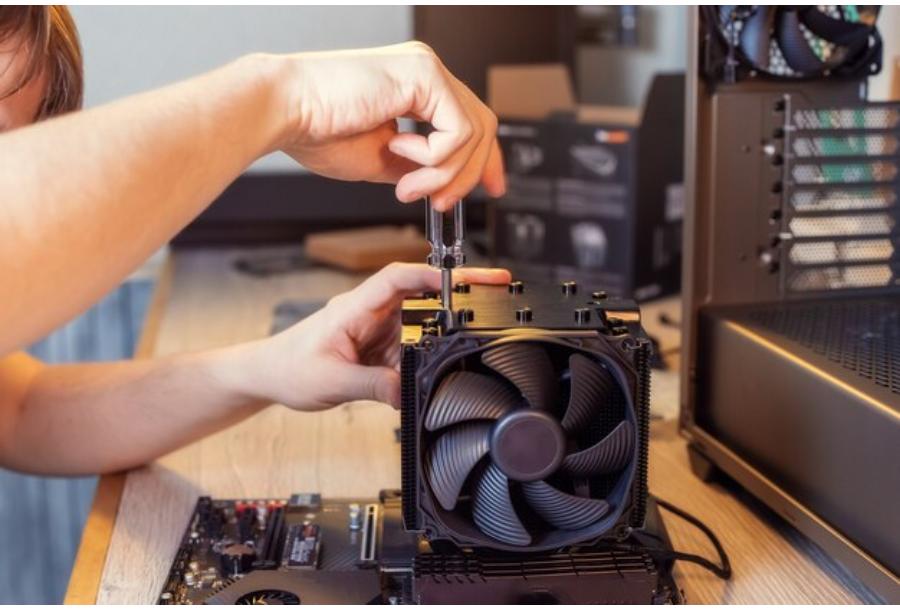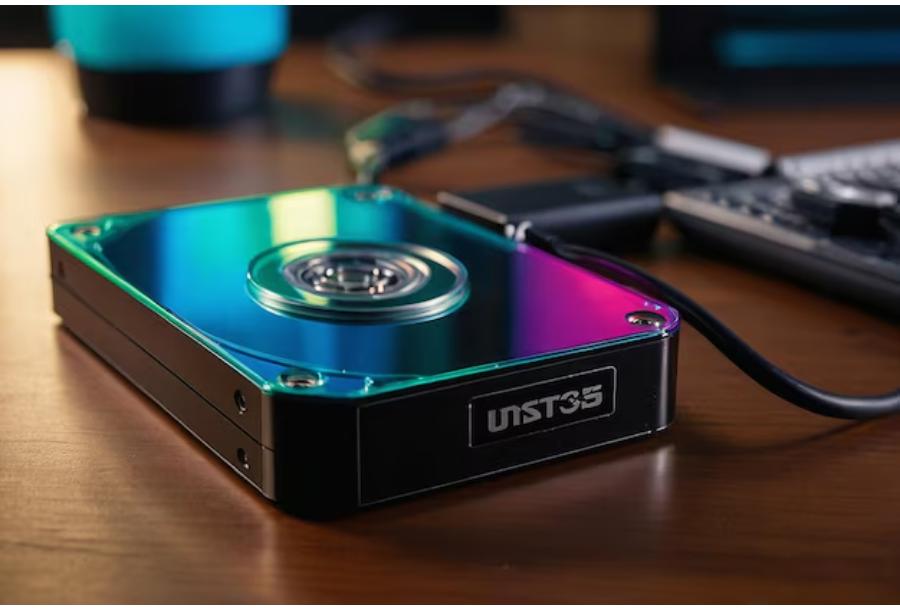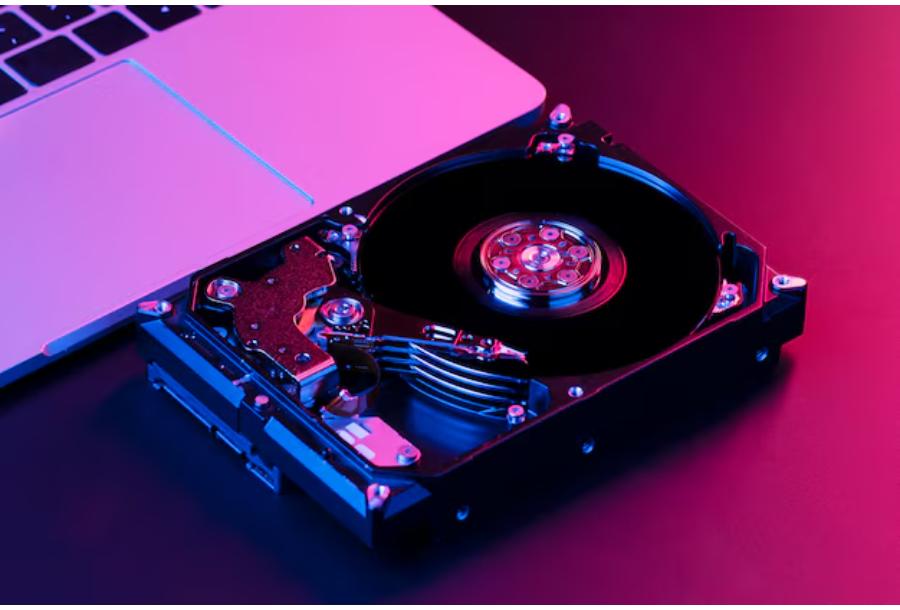I was excited to get a new graphics card but worried my motherboard could handle it. I’ll share my experience and simple tips to check compatibility.
To determine if your motherboard will support your GPU, check for a compatible PCIe slot, ensure your power supply meets the GPU’s requirements, and confirm BIOS compatibility. Also, verify that your case has enough space and adequate cooling for the GPU.
In this article, we will discuss Will My Motherboard Support My Gpu.
Introduction:
When you’re looking to upgrade your gaming rig or improve your PC’s performance, one crucial question often arises: “Will my motherboard support my GPU?” Ensuring compatibility between your motherboard and GPU is essential to avoid potential issues and maximize performance. This article will guide you through the key factors to consider when determining if your GPU will work seamlessly with your motherboard.
Understanding Motherboards:
What is a motherboard?
The motherboard is the backbone of your PC, connecting all the essential components, including the CPU, RAM, storage devices, and peripheral devices.It’s really important for how well your computer works
Key components of a motherboard:
- CPU Socket: The slot where the CPU is installed.
- RAM Slots: Memory slots for installing RAM modules.
- PCIe Slots: Expansion slots for GPUs, sound cards, and other peripherals.
- Chipset: Manages data flow between the CPU, RAM, and peripherals.
- Power Connectors: Provide power to the motherboard and connected components.
- I/O Ports: External connectors for USB, audio, and networking.
Understanding GPUs:
What is a GPU?
A Graphics Processing Unit (GPU) is a specialized processor designed to accelerate graphics rendering and handle complex computations for gaming, video editing, and other intensive tasks. It’s a critical component for gamers and professionals who require high-performance graphics.
Key components of a GPU:
- CUDA Cores/Stream Processors: Units that handle parallel processing.
- VRAM: Dedicated video memory for storing textures and rendering data.
- Cooling System: Fans or liquid cooling to maintain optimal temperatures.
- Power Connectors: Provide additional power to the GPU.
- Output Ports: HDMI, DisplayPort, and DVI for connecting monitors.
Motherboard/GPU compatibility:
Your motherboard has PCIe 2.0, but the AMD Radeon R9 270X needs PCIe 3.0. It will still work but at a slower speed. You won’t have major compatibility issues, but performance might be slightly affected.
The Importance of Compatibility:
Why does compatibility matter?
Ensuring compatibility between your motherboard and GPU is vital for the smooth operation of your system. Incompatibility can lead to performance issues, system instability, and even hardware damage.
Potential issues of incompatibility:
- No Display Output: The GPU might not function properly, resulting in no signal to your monitor.
- System Crashes: Incompatibility can cause frequent crashes and freezes.
- Reduced Performance: An incompatible setup can throttle the performance of your GPU.
Checking the PCIe Slot:
What is a PCIe slot?
The Peripheral Component Interconnect Express (PCIe) slot is a high-speed interface used to connect GPUs and other expansion cards to the motherboard.
Different types of PCIe slots:
- PCIe x16: The most common slot for GPUs, offering maximum bandwidth.
- PCIe x8, x4, x1: Slots with reduced lanes and bandwidth, used for other peripherals.
How to identify your motherboard’s PCIe slot?
Check your motherboard’s manual or manufacturer’s website to identify the type and number of PCIe slots available. Ensure your GPU matches the slot type for optimal performance.
Power Requirements:
GPU power consumption:
GPUs can consume significant power, especially high-end models. It’s crucial to ensure your power supply unit (PSU) can deliver adequate power to support your GPU.
Power supply unit (PSU) compatibility:
- Wattage: Ensure your PSU has sufficient wattage to handle the GPU and other components.
- Efficiency Rating: Higher efficiency PSUs (80 PLUS Bronze, Silver, Gold, etc.) provide more reliable power.
Checking PSU connectors:
Modern GPUs require additional power connectors (6-pin, 8-pin, or both). Verify that your PSU has the necessary connectors to power your GPU.
BIOS Compatibility:
What is BIOS?
The Basic Input/Output System (BIOS) is firmware that initializes hardware during the boot process and provides runtime services for the operating system.
How BIOS affects GPU compatibility?
An outdated BIOS may not recognize newer GPUs, leading to compatibility issues. Updating the BIOS can resolve these issues and improve compatibility.
Updating BIOS for better compatibility:
Check your motherboard manufacturer’s website for BIOS updates and follow their instructions to update your BIOS. This can enhance compatibility with modern GPUs.
Physical Space in Your Case:
Importance of physical space:
GPUs come in various sizes, and it’s essential to ensure your case can accommodate the GPU without obstructing other components or airflow.
Considering airflow and cooling:
Adequate airflow is crucial for maintaining optimal temperatures. Ensure your case has sufficient airflow and cooling solutions to prevent overheating.
Chipset Compatibility:
What is a chipset?
The chipset is a set of electronic components on the motherboard that manages data flow between the CPU, GPU, RAM, and other peripherals.
How do chipsets affect GPU compatibility?
Different chipsets offer varying levels of support for GPUs. Ensure your motherboard’s chipset supports your GPU for optimal performance and stability.
Checking your motherboard’s chipset:
Refer to your motherboard’s manual or manufacturer’s website to identify the chipset and verify its compatibility with your GPU.
Memory Compatibility:
VRAM and system RAM:
VRAM (Video RAM) is dedicated memory on the GPU, while system RAM is the main memory used by the CPU. Both types of memory contribute to overall performance.
How does memory compatibility affect performance?
Ensure your system has adequate RAM to support the GPU’s performance. Insufficient RAM can bottleneck the GPU and reduce overall system efficiency.
Software and Driver Compatibility:
Importance of drivers:
Drivers are essential software that allows the operating system to communicate with the GPU. Updating drivers keeps your computer running smoothly and helps it work well with other programs.
How to check for driver compatibility?
Go to the GPU maker’s website to get the newest drivers. Ensure they are compatible with your operating system and hardware.
Updating drivers for optimal performance:
Regularly update your GPU drivers to benefit from performance improvements, bug fixes, and new features.
Common Compatibility Issues and Solutions:
Identifying common issues:
- No Display: Ensure the GPU is correctly seated and power connectors are secure.
- System Crashes: Update drivers, and BIOS, and check for overheating.
- Performance Drops: Ensure the PSU can handle the GPU’s power requirements.
Troubleshooting steps:
- Check Connections: Verify all cables and connectors are secure.
- Update Software: Ensure BIOS, drivers, and operating system are up to date.
- Monitor Temperatures: Use monitoring software to check GPU temperatures and ensure adequate cooling.

Upgrading Your System:
When to consider upgrading your motherboard?
If your current motherboard lacks support for modern GPUs, consider upgrading to a newer model with enhanced compatibility and features.
Tips for a successful upgrade:
- Research Compatibility: Ensure the new motherboard supports your existing components.
- Plan the Upgrade: Back up important data and follow a step-by-step installation guide.
- Test Thoroughly: After installation, test the system to ensure all components function correctly.
Future-proofing your system:
Choose a motherboard with advanced features and support for future technologies to extend the lifespan of your system and accommodate future upgrades.
What GPU can my motherboard support?
Yes, Check your motherboard’s specs to see which GPUs are compatible. Our experts at PC Guide can help you find the right match. We research and test to give you the best recommendations for your motherboard and GPU needs.
How do I know what GPU is compatible with my motherboard?
Check your motherboard’s manual or look for PCIe slots on the board. Make sure the slot fits your GPU’s needs, like the right version (3.0 or 4.0) and size (x16). This ensures your GPU works well and runs smoothly without any problems.
Power Supply Compatibility:
Make sure your power supply can handle the new GPU’s power needs. GPUs need a lot of energy, so check if your power supply has enough power (watts) to support the new GPU. This prevents damage and ensures smooth performance.
How do you tell if a GPU will fit?
Check the GPU’s size on the manufacturer’s website and your case’s space. Ensure the GPU fits in the PCIe slot and doesn’t touch other parts like RAM or storage. Measure to avoid installation problems and ensure a smooth fit.
Will all modern motherboards support all modern graphics cards without any issues?
Yes, most modern motherboards support modern graphics cards, but check the PCIe version (2.0 to 5.0). Also, ensure the motherboard can handle the card’s size and weight, like pairing a large GPU with a small ITX motherboard.
How can I know what graphics card my motherboard can handle?
Check your motherboard manual or website for compatible graphics cards. Ensure the card’s power, PCIe version, and size match your motherboard’s capabilities for a smooth upgrade and gaming experience.
Will my motherboard support any graphics card?
No, your motherboard isn’t limited to the ATI Radeon 300 series only. It likely supports various graphics cards, but check the PCIe version, power supply, and physical space to ensure compatibility. Not all cards will work, so verify before upgrading.
Does my motherboard supports this graphic card?
Your motherboard’s compatibility with a graphics card depends on a few things. First, check the PCIe version – it should be 3.0 or higher. Next, ensure the power connectors match, either 6-pin or 8-pin. Finally, verify the UEFI BIOS supports the new card. If all these matches, you’re good to go.
I need help finding the right GPU for my motherboard.
Finding the right GPU for your motherboard can be tricky. First, check your motherboard manual or HP support website for compatible GPUs. Ensure the motherboard’s PCIe version, power connectors, and UEFI BIOS support the new GPU. This ensures a smooth and compatible upgrade.
FAQs:
How do I know if a GPU is compatible with my motherboard?
Check your motherboard’s manual or website for PCIe slot details. Ensure the slot version (2.0 or 3.0) and speed (x16 or x8) match the GPU’s requirements. Physical slot size also matters, so verify that too.
Does all motherboards support GPU?
Not all motherboards support all GPUs. Check your motherboard’s PCIe version, power connectors, and BIOS version to ensure compatibility. Most motherboards work with multiple GPU brands, but verification is still necessary.
Is my CPU compatible with my GPU?
CPU and GPU compatibility isn’t about speed, but rather about motherboard support. Ensure your motherboard supports your CPU and has a PCIe slot for your GPU. If it does, they’ll work together, even if one is faster than the other.
Will my motherboard support RTX 4070?
Most modern motherboards support the RTX 4070. To confirm, check your motherboard’s manual or website for PCIe 4.0 support and a compatible power connector (8-pin or 12-pin). If it has these, your motherboard will support the RTX 4070.
Motherboard graphics card compatibility checker online?
Use online tools like PC Part Picker or Build My PC to check motherboard and GPU compatibility. Enter your motherboard model and GPU choice, and the tool will indicate if they’re compatible.
Will my motherboard support my gpu gaming?
YES Check your motherboard’s PCIe version, power connectors, and BIOS version to ensure GPU support. If your motherboard has PCIe x16, 6-pin or 8-pin power, and updated BIOS, it should support your GPU for gaming.
Is my motherboard compatible with CPU?
YES Check your motherboard manual or website for “CPU support list” or “compatible CPUs”. If your CPU model is listed, it’s compatible. Also, ensure the motherboard socket matches the CPU socket type (e.g., LGA 1200 or AM4).
Conclusion:
In conclusion, to ensure your motherboard supports your GPU, check three key things: PCIe version, power connectors (6-pin/8-pin), and BIOS version. If your motherboard has these, it should support your GPU. Also, verify the motherboard’s CPU support list and socket type match your CPU for a compatible build.


Leave a Reply